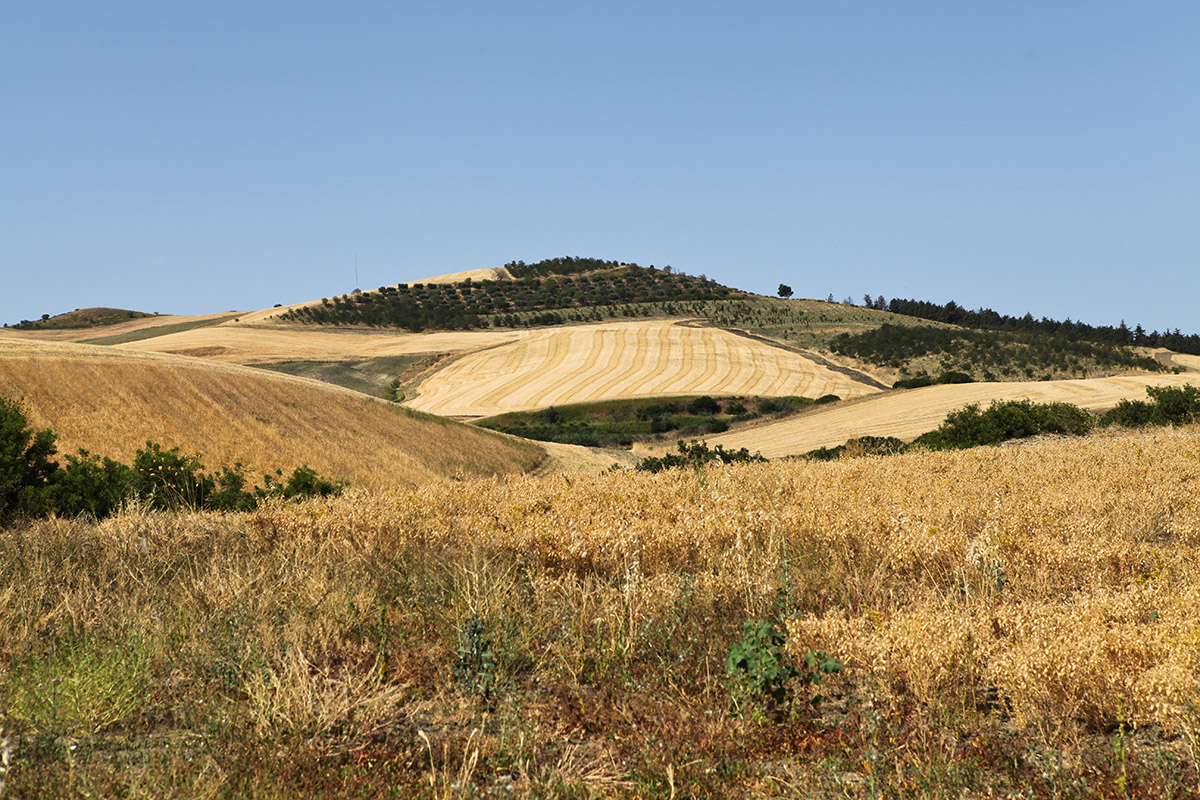April 8, 2022
Shipping woes, fertilizer shortages and reduced supplies: Kira Nash talks to GPC members about the effect the war in Ukraine is having on the pulses industry


From shipping and logistics to inflation and global food supply, the war in Ukraine continues to damage already fragile agri-food systems still reeling from the Covid-19 pandemic. Although pulses are just one part of a much larger global landscape, their critical importance as a food source and the interconnectedness of our systems of agriculture and trade mean that the ripples of disruption will be felt across the world, whether through loss of acreage, difficulty in obtaining agricultural products, food insecurity or logistics. Kira Nash reports.
Russia and Ukraine together supply over a quarter of the world’s wheat, and Ukraine alone was predicted in 2021/2022 to be the world’s top producer of sunflower oil (50%), the 2nd largest producer of barley, third largest of rapeseed and wheat, and fourth largest of corn. In 2020, 95% of Ukraine’s wheat exports traveled via the Black Sea, a voyage currently considered by many companies to be uninsurable due to the danger of the nearly 1000 sea mines that have been deployed in its waters. As Ukraine’s ports are currently either all closed or all closed to Ukrainian traffic, as is currently the case with those on the Sea of Azov, the impacts on all trade will be enormous.
Wheat is a vitally important commodity crop worldwide, and wheat from Russia and Ukraine is essential to the food supplies of the Middle East and Africa in particular. Ukrainian exports of wheat — along with rye, oats, millet, buckwheat, sugar, and salt — are currently banned by the Ukrainian government. It’s possible that some of the wheat deficit could be covered by Russian wheat; according to GPC Board Member Cem Bogusoglu, Head of Pulses Trading at Delta Corp Shipping, Russia boosted their Black Sea wheat exports in March of 2022 to 1.78 million metric tons, with vessels traveling together in daily convoys to reduce the danger. This is a massive increase on the around 1 million metric tons exported in March of 2021, when a wheat-export tax led to higher exports in February 2021 and much lower exports in March. However, it’s only a little more than half of the wheat they exported in March of 2020.
It is hoped that, as time goes on and more trade routes reopen, Russian exports will approach levels closer to normal; coaster shipments in general are active again for Russian vessels after having been halted early in March, although all vessels are now subject to checks by the Russian Coast Guard. But even with increased or steady exports, the international sanctions applied to Russia and Russian banks have their own consequences, although exporters are hurrying to find alternative solutions and open new channels to pay for Russian products in rubles.
Predicted shortages from the non-movement of Ukrainian wheat and other cereals and potential further disruptions in Russian wheat are likely to have consequences for pulses acreage around the world. While Bogusoglu said that he originally expected a shift to pulse production in Russia this year due to export taxes on wheat, corn, and barley, the ever-evolving global food situation will likely affect spring planting decisions. During the GPC’s CEO Roundtable Will Watchorn, Global Head of Pulses at Viterra, expressed his expectation that the Russian pea crop will remain unchanged, however he pointed out that currency issues “make imported soymeal extremely expensive, so [...] we could see an increased usage of pulses in Russia for feed, which will reduce the exportable surplus.”
Also speaking at the Roundtable, Huseyin Arslan, Chairman of AGT Foods & Ingredients and former GPC President, shared Watchorn’s view that Russian planting would likely proceed as usual, but was concerned that Russian farmers may struggle with acquiring the necessary spare parts for their agricultural equipment and with securing export channels.
Bogusoglu’s view on Ukraine is that farmers intend to plant as close to normal as possible; the planting season began in mid-March in southern regions and will extend through April in northern areas if temperatures and moisture levels allow. However, ongoing fighting has destroyed agricultural equipment, interrupted supplies, and caused a great deal of uncertainty.
This is confirmed by Antonina Skliarenko, GPC Board Member and President of Ukraine Pulse Association, who said that while growers are indeed trying to carry out sowing in full, there is almost certain to be a reduction in a variety in pulse hectares this year due in part to fighting in areas where those crops would normally be sown. Her current estimates are that, from last year, the 2022 pea crop will be down from 242,000 to around 100,000-110,000 hectares, the bean crop will reduce from 49,000 to 40,000 hectares, chickpeas will drop from 10,600 to 5000-6000 hectares, and lentils will decrease from 6200 to 1500-2000 hectares.
With regard to pulse acreage versus acreage for cereal and grains, she estimates that the total area for cereals and grains can be 4.7 million hectares. This is 39% lower than the previous year, however she said that the overall structure has not changed. Currently in Ukraine, there are no export bans on pulses but, while Ukraine exported 6-7 million tons of grains, pulses, and oilseeds before the war, 90% of these exports are currently suspended as a result of sea travel being blocked. However, she was glad to communicate that, as of the beginning of April, the Ukrainian Ministry of Agriculture is working in cooperation with partners from three other nations to resolve the transport situation. Three alternative options have arisen, and it seems likely that export potential will be restored to 80%. Even so, Skliarenko believes that global prices will only continue to rise.
During the Roundtable, GPC President Cindy Brown spoke of a likely decrease in pulse acres in the United States this year and a consequent increase in prices, saying “We’re having a very serious time convincing growers that they should be planting pulses, as in dry beans. We cannot compete in prices at this point with corn, soybeans, or wheat as far as what growers can produce … but growers have to be able to have the same value coming back to their land that they can from other crops. So, we won’t see many acres of beans being produced.”
These issues are, of course, compounded by the rapidly rising price of fuel and fertilizer as well as storage concerns. According to UK-based commodity consultancy firm CRU, the cost of various crop-nutrient commodities has risen by 30% since the beginning of 2022 and is now greater than during the crisis of 2008. Between Russian and Belarusian supply disruptions, a Ukrainian export ban, ongoing Chinese Covid shutdowns and Chinese export bans on phosphate and urea, and ongoing railway labor disputes in Canada, the cost of fertilizer continues to rise. That increase must be factored into overall crop costs by growers who are already struggling with the astronomical rise in cost of diesel: a fuel which experts predict may soon be in extremely short supply, with stocks in the US, Europe, and Singapore already concerningly low, Russian imports banned, and crude oil prices remaining above $100 per barrel.
All of this contributes to — but has not caused — the rapid rise in inflation seen across the world; even before the war began, the US was experiencing its highest inflation in 40 years at a rate of 7.9%.
With regard to pulses, there are mitigation factors that can be taken to free up more peas - in particular for human consumption - by exploring alternative protein sources for animal feed and alternative crops sources — the EU, Canada, Baltic states — are possible if conditions are right and growers are willing. Still, it seems clear that even if Russian production remains at normal levels, there will be an overall reduction in available pulses in 2022 given the inevitable decrease in Ukrainian production and additional complications elsewhere.
Muhammad Ahmed, President of Pakistan Pulses and Importer Association and CEO at Awam Group, said that in 2021, Pakistan imported around 300k tons of yellow peas and chickpeas from Russia and Ukraine, with the majority from Russia. As Ukraine’s ports are closed, there is no possibility of export from Ukraine at present and sanctions on Russia, combined with the closure of many shipping lines, have made it difficult to acquire Russian products. However, as Pakistan is still receiving offers for export from Russia and exporters are working to find ways around their challenges he feels that, while supply will definitely be affected, there will not be a complete deadlock.
News from Nepal is less optimistic. According to GPC Board Member Ankit Kedia of Mahabir Overseas Pvt Ltd, the country is being severely hit by food inflation. Landlocked and with accessibility only to two Indian ports, Nepal is 95% dependent on food imports, with peas, soy beans, rapeseed, coriander, and crude sunflower oil coming from Ukraine. Nepalese households are moving toward alternative options in pulses and edible oils but, with logistics management in chaos and freight costs remaining high, the situation is very difficult.
The state of affairs in Nepal highlights the continuing logistics crisis as yet another factor affecting food and commodity prices and food security worldwide. Although many hoped that tensions would ease as the pandemic abated, Covid shows no signs of disappearing and neither does the incredible disruption at ports worldwide. Increasing delays at the Port of Shanghai due to Covid restrictions will only worsen supply-chain and logistics nightmares and the rising costs of fuel make shipping delays even more crippling.
All of the speakers at the recent Roundtable event underscored the critical importance of GPC’s upcoming Pulses 22 convention in Dubai in May, seeing it as a chance for this vital dialogue and cooperation to occur. Industry members and leaders have a precious opportunity to help ensure a more secure, equitable future and the conference will help to build the bridges and strengthen the connections we need to support each other and the world, whatever happens as we move through the uncharted waters of 2022.
Ultimately, there is no overwhelmingly positive spin that can be applied to the current global situation. The Ukraine crisis and its various consequences, along with the world’s third year of Covid-based disruption, will only exacerbate many of the issues that threatened food security and economic stability in previous years. Cindy Brown emphasized the importance not only of GPC’s actions but also of the actions of individual trade associations that belong to GPC. She also highlighted the need for interaction with governments, FAO, the World Food Program, and WTO as vital in the effort to increase food deliveries to hungry people, whether with respect to market access, general policy points, or even as a matter of avoiding the type of food protectionism in which various governments are currently engaging. “We need to make sure that we're taking care of people. But policy-wise, each of us needs to reach out to our individual governments, and then, jointly as GPC, work together in the international arena.”
There is no doubt that, the longer the conflict continues, the more significant its ramifications will be. Still, growers around the world will do what they can. “Despite all the difficulties of sowing, our farmers are still determined,” said Skliarenko.
READ THE FULL ARTICLE

Ukraine / shipping / logistics / inflation / global food supply / war in Ukraine / Russia / Black Sea / Cem Bogusoglu / CEO Roundtable / Will Watchorn / Huseyin Arslan / Antonina Skliarenko / Cindy Brown / Muhammad Ahmed / Ankit Kedia
Disclaimer: The opinions or views expressed in this publication are those of the authors or quoted persons. They do not purport to reflect the opinions or views of the Global Pulse Confederation or its members.